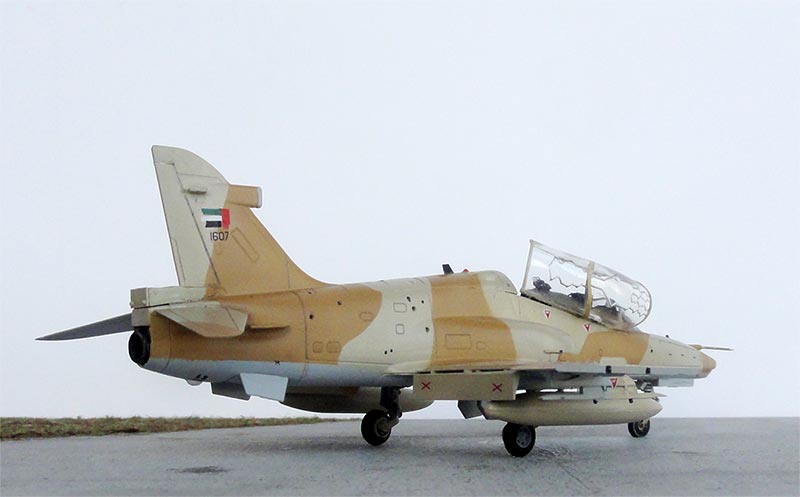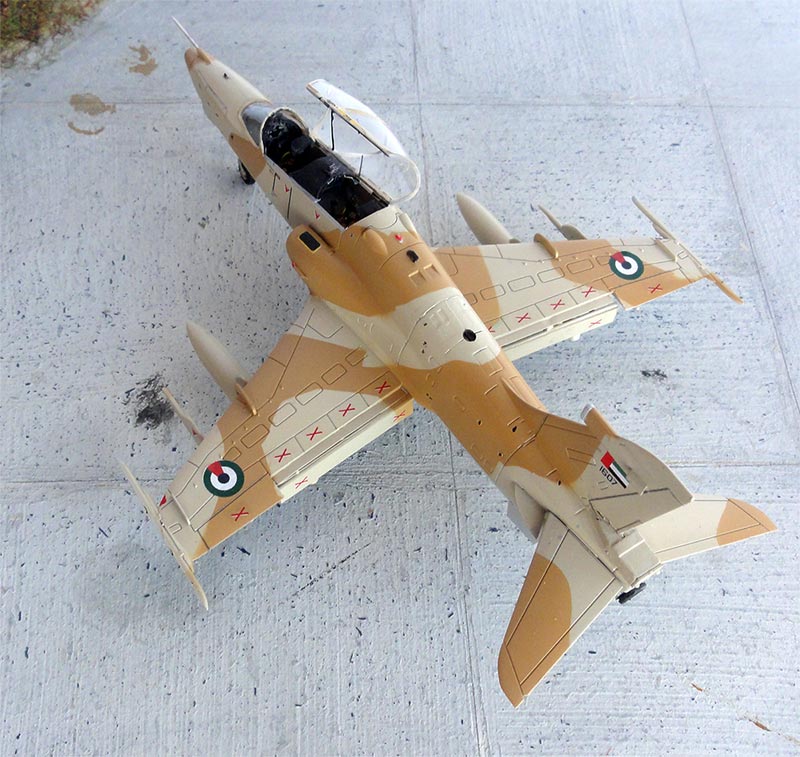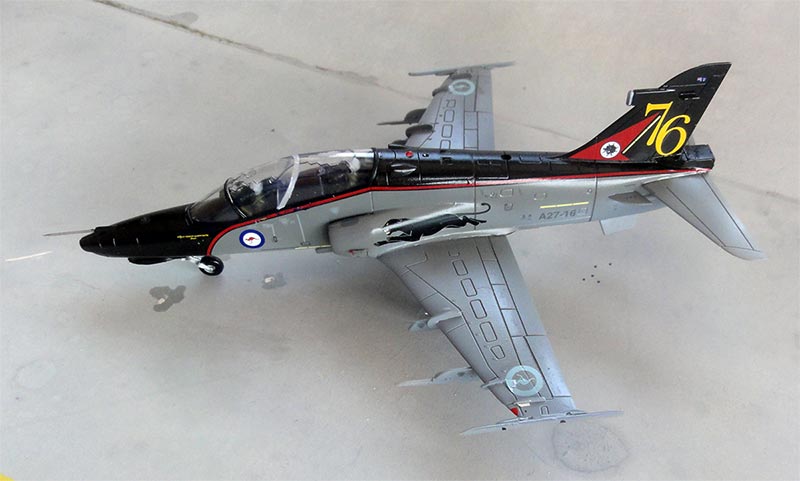[ page 8 ]
1/72 scale kits of the Hawk jet
... continued from Hawk page 7....
Later generation series 100 series Hawk:
(A3) Airfix
(Hornby) Later generation:
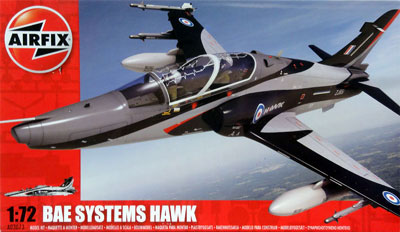
This Airfix kit #A03073A was released in 2009. It is for a new generation Hawk in 1/72 and is a new mould.
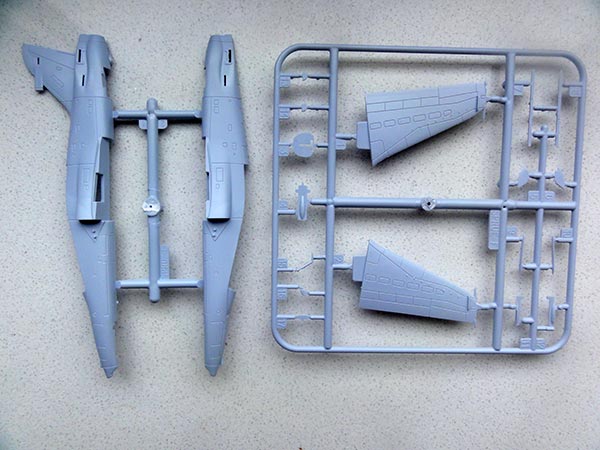
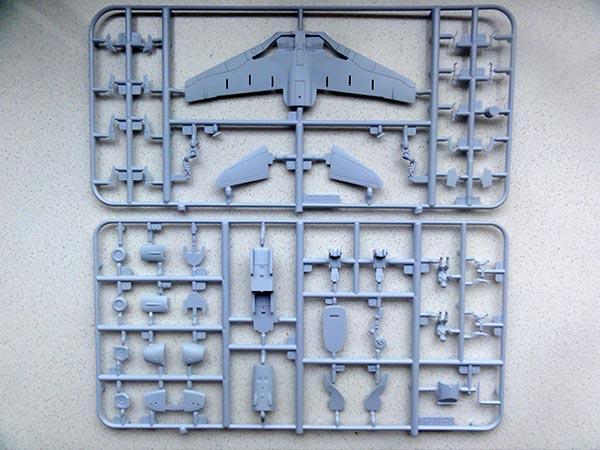
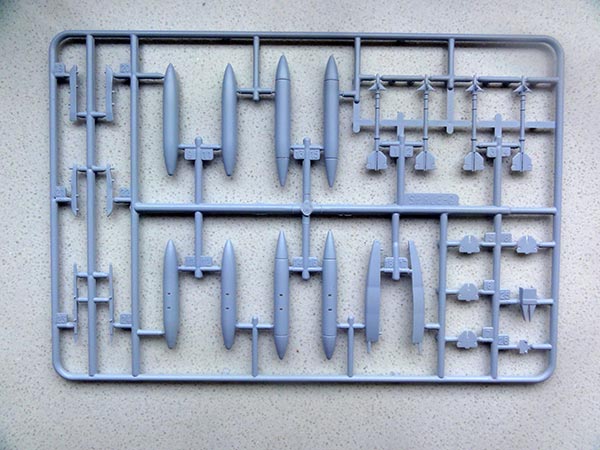
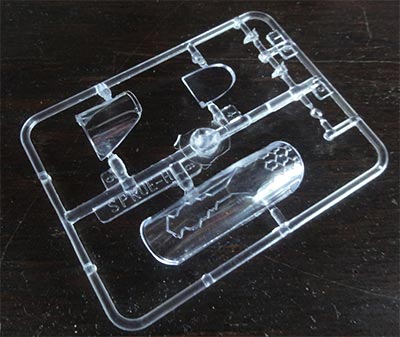
Decals are in this kit for:
(a) Mk. 120D BAe systems demonstrator with an attractive scheme as in 2008;
(b) Mk.128 as used by BAe systems in 2008 in an overall gloss black scheme;
(c) Mk.132, India Air Force as used at Bidar base in 2009 in an overall medium grey scheme.
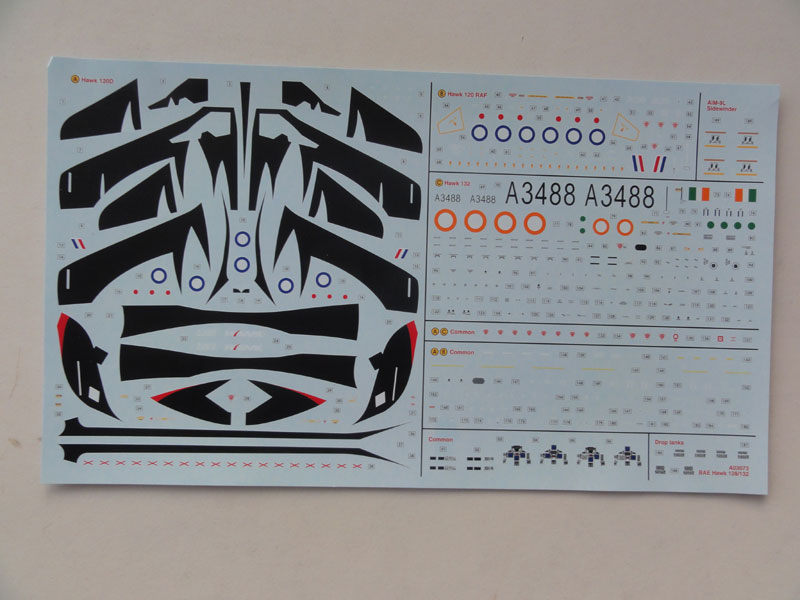
You get a lot of stencilling as well in the decalsheet. The "dots" in the roundels are separate decals to avoid "off center" printed roundels. The large black decals are for scheme (a). There are some decal numbers wrong for the side cockpit panels in the instructions.
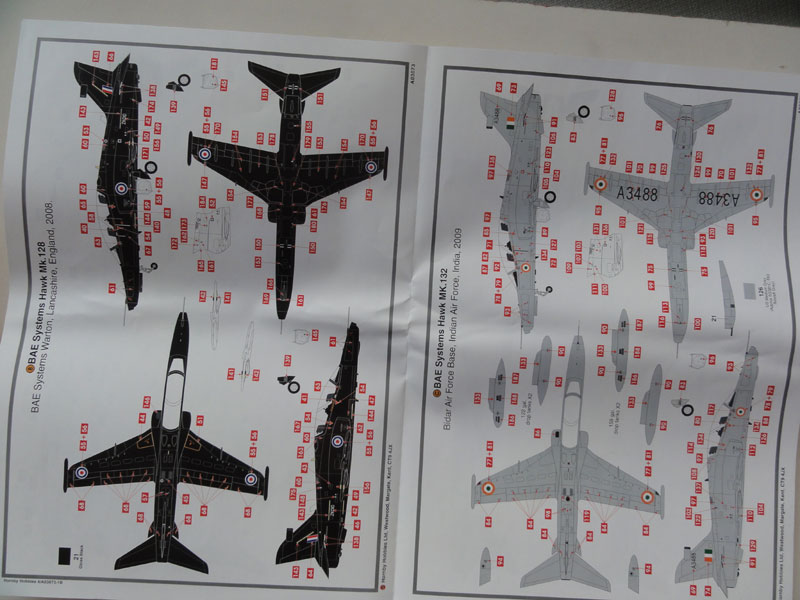
My modelling friend Peter made this kit with the BAe demonstrator scheme (a) as seen here straight out of the box:
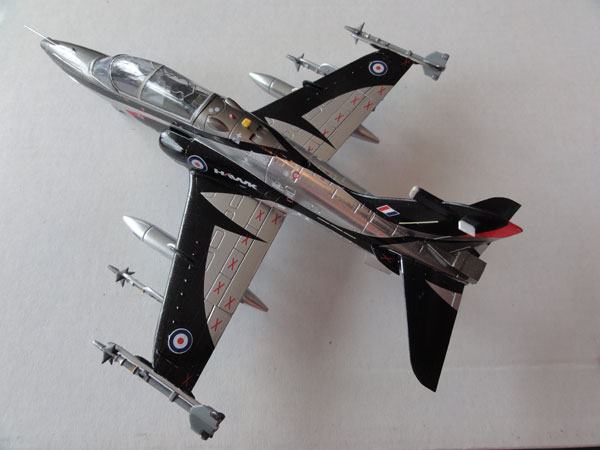
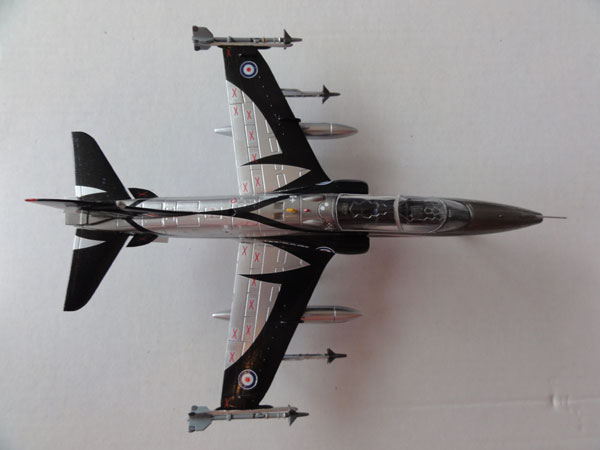
Peter made the model with canopy closed.
What is in the kit?
The cockpit is a bit simple but you get 2 pilot figures.
The gear bays are a bit undeep but the nose gear doors have the correct bulged fairing.
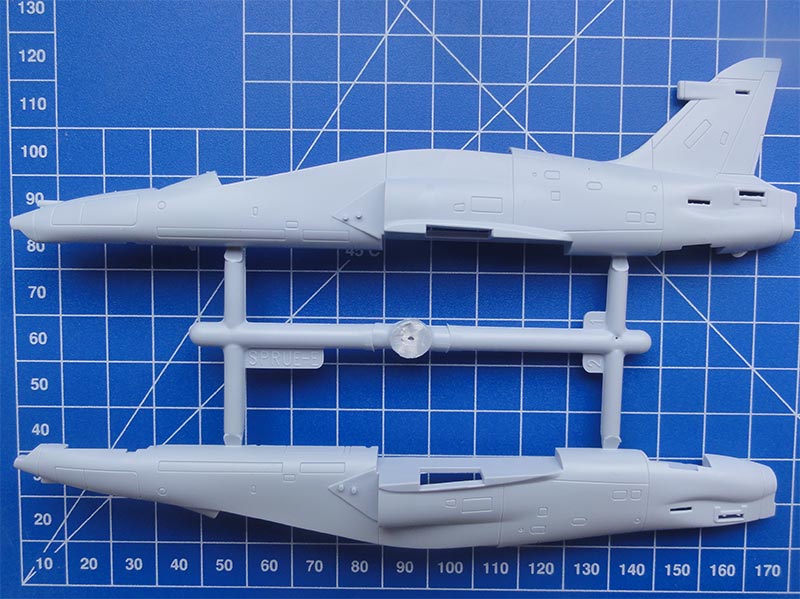
The fuselage shape looks OK with also the different "fatter" rear fuselage changes for the mk.127 Adour 871 engine (or Adour 681 for the CT-155 or Adour 951 for the mk.128/ T2). Some sub-variants have a different shape at the rear fuselage below the rudder or even a parachute pack. (note: step 21 in the instructions shows a parachute housing that is optional as part #25).
The kit jet pipe #53 though looks a bit too small in diameter though.
Main gear door parts #10B and 14B should be 2 doors, not one bit. The small anti-collision lights on the intakes are missing and the wing leading edge fences may need a few changes depending on the sub-variant. These can be easily done.
Armament/ stores are a few Sidewinders supposedly AIM-9L/M, central gun pod and fuel tanks with their pylons.
The wing flaps are, as usual in all 1/72 kits, moulded "up" in flight position. For a parked Hawk, to be more accurate, these should separated and adapted with the flap fairings to be set "drooped down". The later series Hawk also has than a full span flap vane sitting on the trailing edge flap with a gap in between.
![]()

The same Airfix kit #A03073A was released with different decals in 2020:
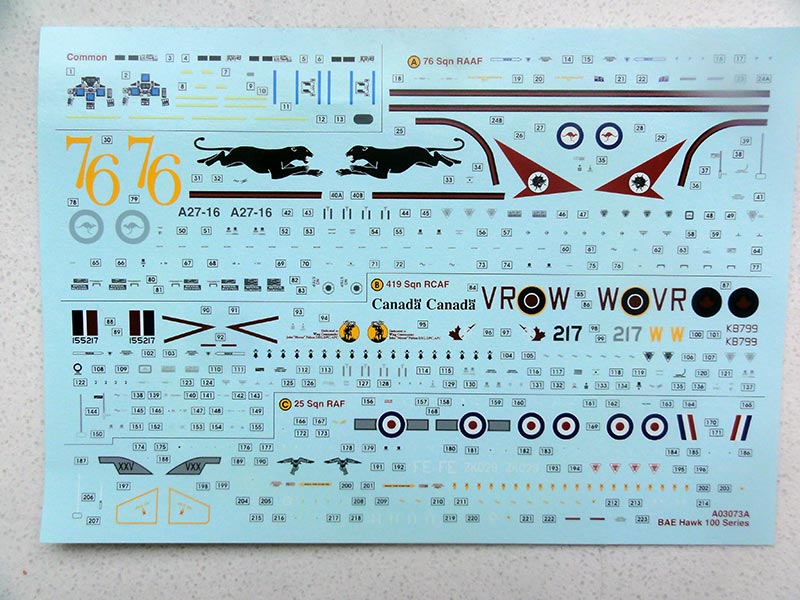
This kit A03073A has nice decals for:
(a) Hawk mk.127 of the Royal Australian Air Force in a special scheme of no.76 squadron at Williamstown, 2003;
(b) CT-155 Hawk of the Royal Canadian Air Force of no.419 squadron in a camouflage scheme; based at Moose Jaw base, 2016.
(c) Hawk mk.128 / T2 of the Royal Air Force no.25 squadron at Valley, Wales, 2018. Overall black scheme. (note: there is a small print error in tail marking decal "189", it should be XXV)
page 1
page 2
page 3
page 4
page 5
page 6
page 7
page 8
The first Airfix Hawk series 100 kit #A03073A as discussed above was made for the World Air Forces in Plastic series in a United Arab Emirates (UAE) Mk.102 in a desert camouflage scheme.
It was decided to adapt the wing parts to show a drooped trailing edge flap as seen on parked Hawks. The wheel bays got their ceilings removed.
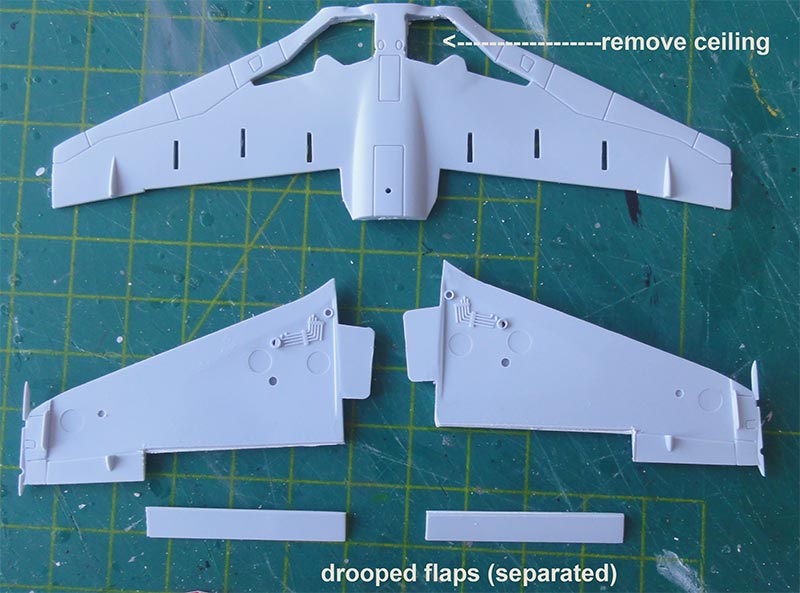
The cockpit detailling will be done at a later stage, shave off some plastic from the rear bulkhead #9A to have it to fit.
I scraped the insides of the jet pipe #6B to get a bigger diameter. Than the fuselage was assembled after some nose weight was added. The intakes are a bit undeep but were not changed, it is almost invisible.
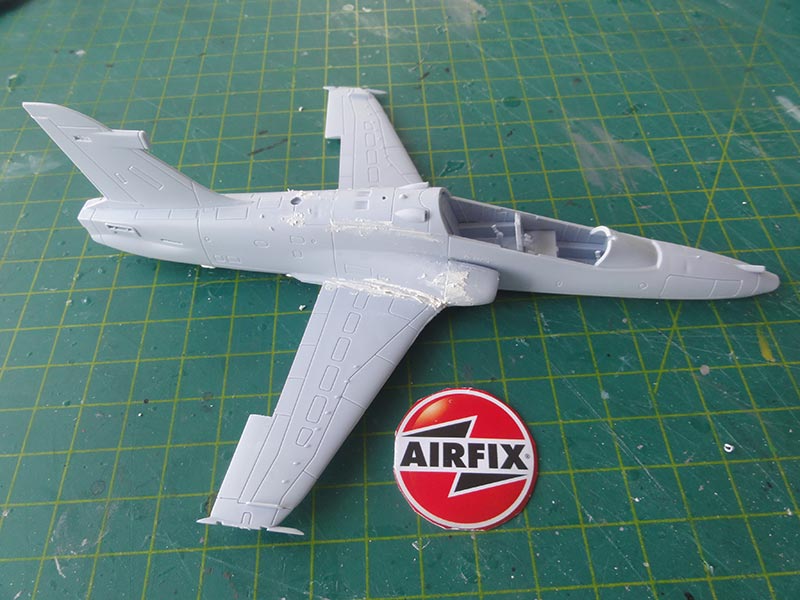
Some putty and sanding was needed.
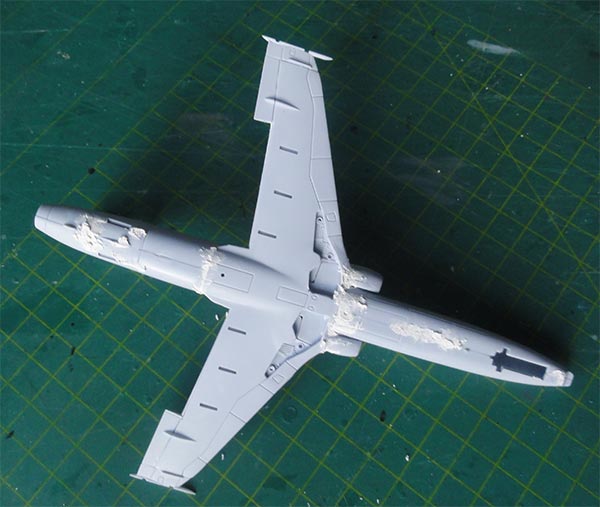

Each wing trailing flap of later generation Hawks has a full span vane. This was made from a piece of plastic strip. Each vane was set on small pieces of plastic to get a flow gap between the flap and the vane. The various flap hinges/ fairings were cut in two and installed with each flap with its vane.
The rear fuselage fins at 25 degrees were set and needed some white glue to close the tiny long gaps. The stabilizer strakes were also set.
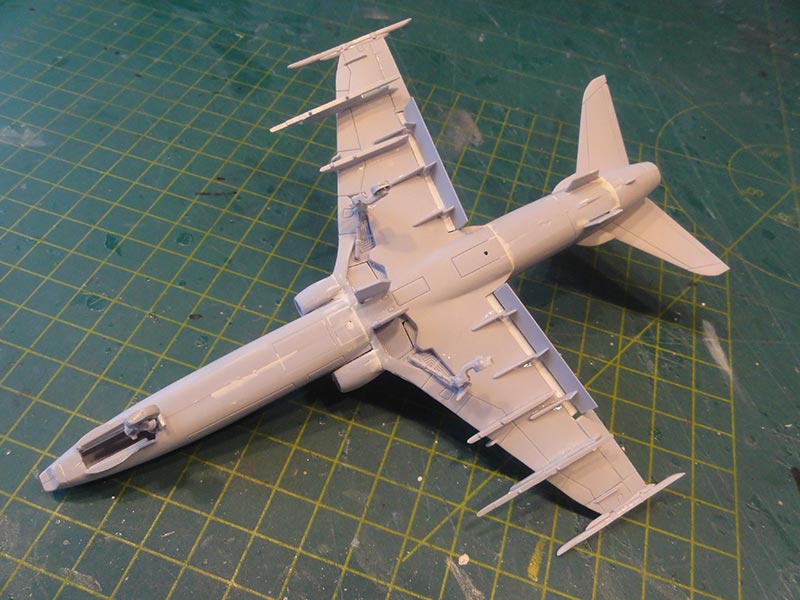
Although normally not done, the landing struts and doors were installed as well as the various pylons at this point. This way, they will get the scheme lower colour in one airbrushed pass, the other gear colours to be painted later on. The various wing fences were also set on the leading edges of the wing.
In the fuselage various ventilation- and system cooling openings were drilled open including some holes in the upper fuselage bit #14A.
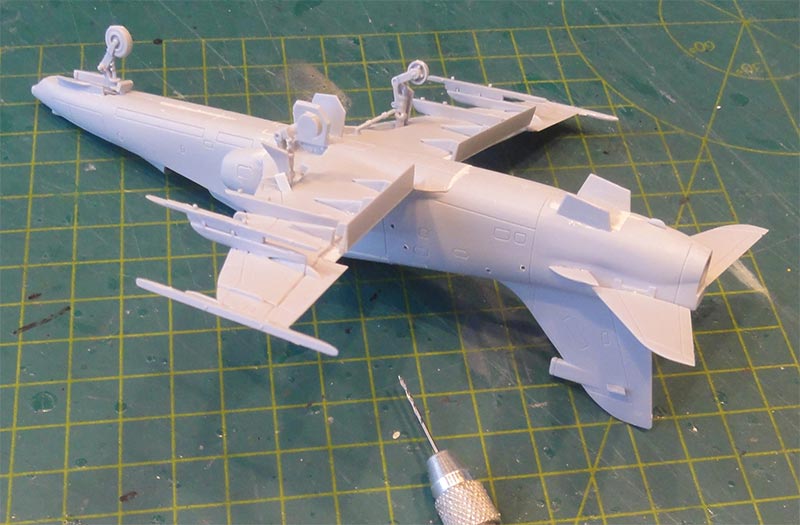
NOTE: I later found out that the UAE Hawk has indeed the parachute housing; I forgot it at this stage, better set part #25 now.
The stores like the fuel tanks were also assembled to be airbrushed.
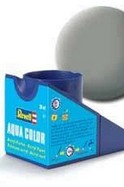
The model got now a base grey coat to act as a sort of primer coat with Revell Aqua 75 streingrau acrylic. When airbrushed it will show any areas that may need a bit more putty or sanding.
It seemed OK and now the camouflage scheme was to be airbrushed. For the UAE scheme, the acrylic colours used were:
- lower areas Gunze Sangyo 338 (about FS36495);
- light sand brown Gunze 313 (about FS33531);
- darker brown pattern Revell Aqua 17 "Afrika braun".
Some masking was needed between colours.
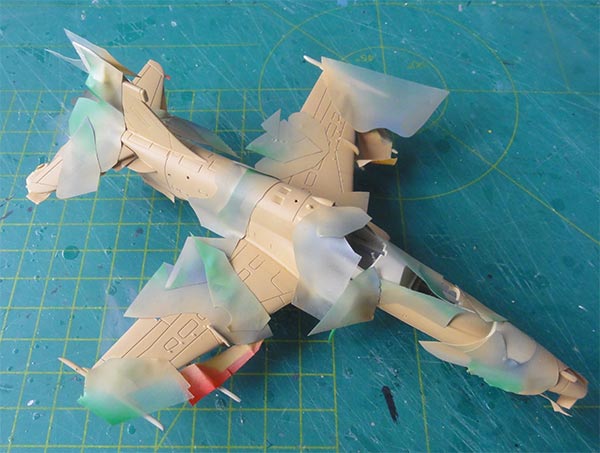
Some pieces of spare decal paper were airbrushed in these colours as well, they may come in handy to do any repairs of needed and for example the canopy frames.

I now found that the parachute housing was forgotten, it was installed now... and painted with a brush.
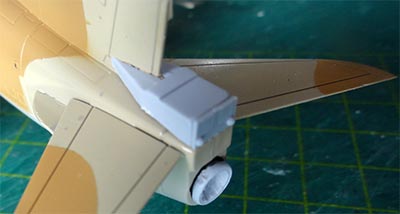
The cockpit interior was painted medium grey with the Martin Baker mk.10L ejection seats various colours with a coal black head frames.
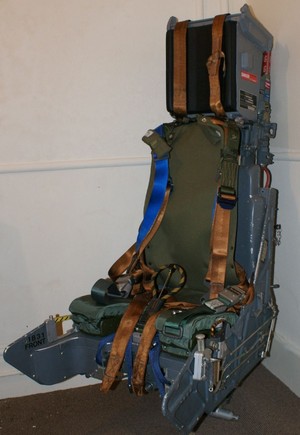
The mk.10 seat may vary a bit between aircraft imstallations, particularly the head box and harness fit.
Harnesses were made from painted tape and set on the seat. Also the airbrushed fuel tanks were installed and the wheels after these had been painted.
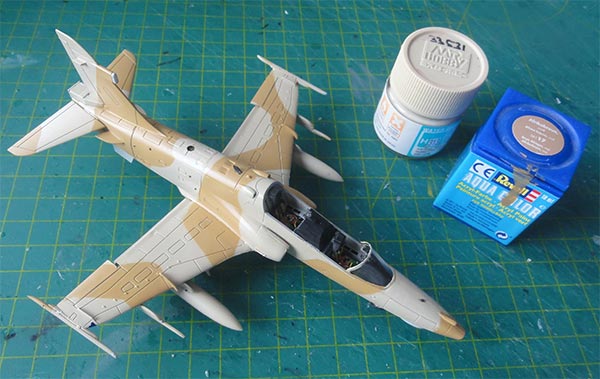
The few UAE air force markings were found in the spares box with decals. (There are also commercial after market decalsets available). The "no step" markings are red crosses. Before decalling, the model got a gloss varnish coat with Johnson Future/ Pledge to avoid "silvering". Any gloss varnish will do though.
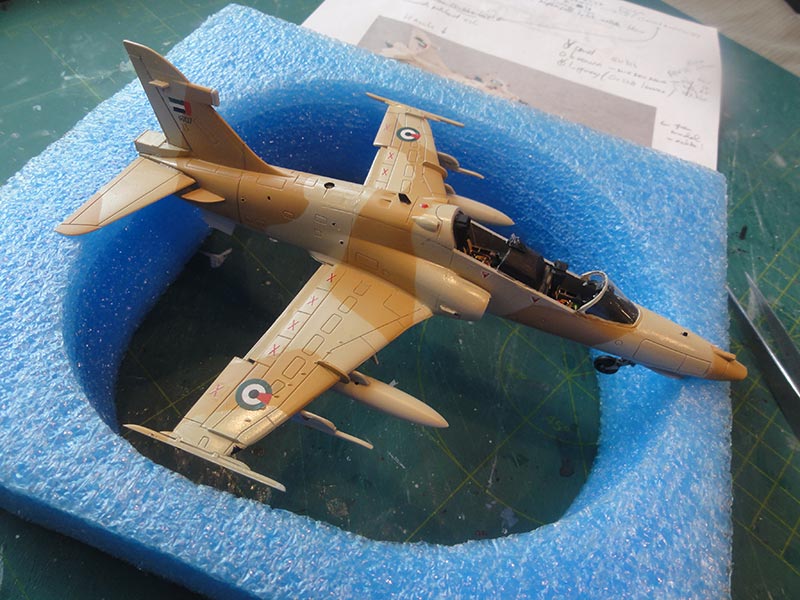
The remaining details were adding the pitot tube, painting the anti-collision lights and the jet pipe. The front of the tail fairing was painted medium grey.
The model got a final semi-gloss varnish coat with some Johnson Future/Pledge mixed with a few drops of Tamiya Flat base X-21. This will give an even semi-gloss sheen and protect the decals.
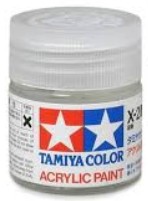
The canopy on this model was to be set open. It has the "detonation chord" moulded. The seats got harnesses made from painted tape. The blast screen #4H between the pilots needed some trimming with sanding and was fixed with white glue. Some small bits were set in the canopy like locks and tubing. The mid curved frame was made from a decal cut in a curve and set.

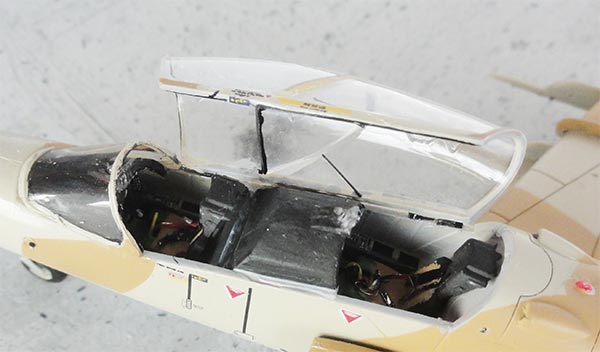
United Arab Emirates
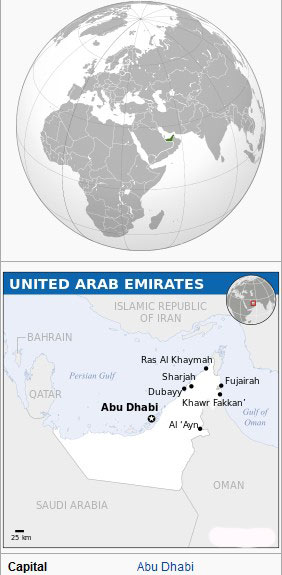

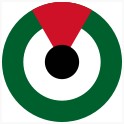
[ area: 83,660 sq.km | capital: Abu Dhabi | population: 9,5 million | GDP US 42,000 nominal per capita ]
After using some 29 Hawk mk.61 and mk.63 from the eigthies, also some 18 Hawk Mk.102 were delivered from 1993.
For more information about the UAE air force, look at the F-16 page here...
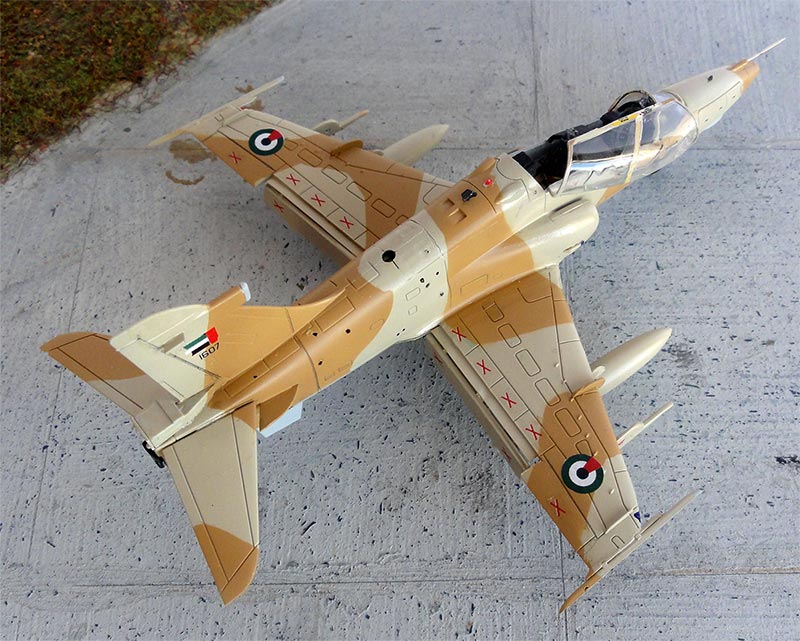 The drooped flaps with full span flap vanes can be seen here.
The drooped flaps with full span flap vanes can be seen here.

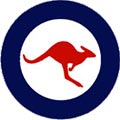
The next 1/72 Airfix series 100 Hawk kit #A03073A was made in a similar way as described above. It was to be made in scheme (a) as per kit for the Hawk mk.127 of the Royal Australian Air Force (RAAF) in a special scheme of no.76 squadron at Williamstown, 2003.
This model would be made with closed canopy and with pilots in the cockpit and "engine running". So the flaps are in a retracted position and the wing could be assembled as per kit.
A 30 mm gun pod was installed at the center station but I got the pod from an Italeri kit which looks slightly better.
The RAAF paint scheme comprised:
- base overall coat of Ghost Grey FS36375 for which Gunze Sangyo 308 acrylic was airbrushed;
- after some masking: darker grey upper pattern of FS36321 with Gunze Sangyo 308 (note: I believe this is more accurate than FS36320);
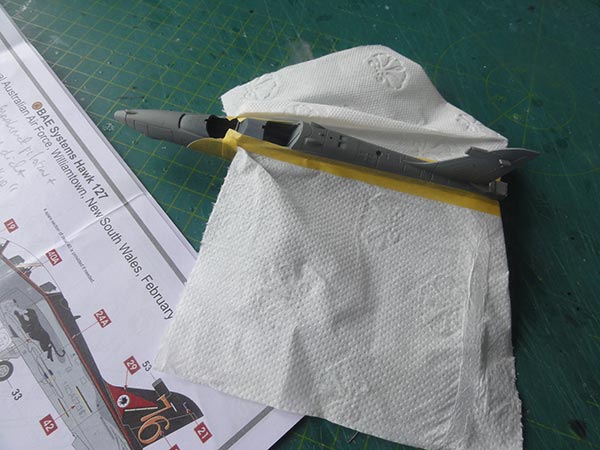
The black areas whith gloss black after masking. Take care regarding the black curved outline on the nose: it was drawn on masking tape in a similar pattern as seen on the decalsheet and than cut with scissors.
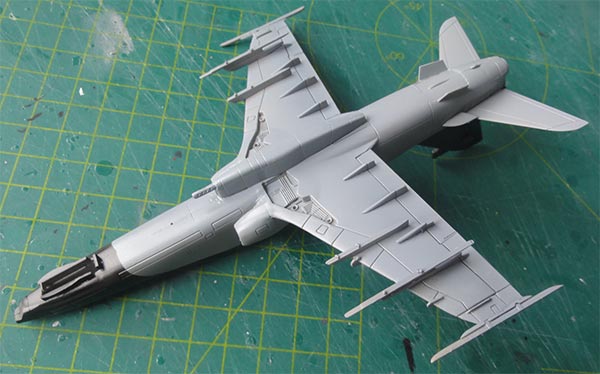
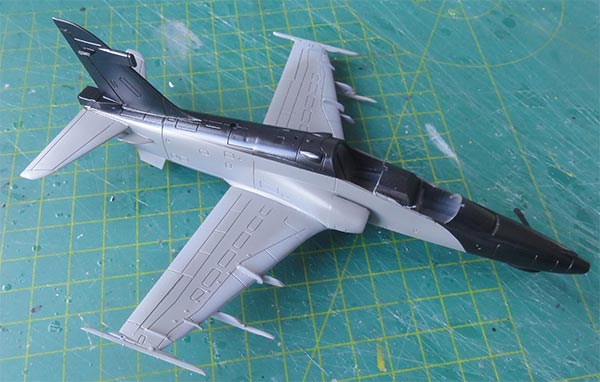
The cockpit got the pilots after these had been painted with white helmets. Blast screen set with a scrap HOTAS on the instrument cover and than installed. Canopy sill gaps were closed with white glue and painted black when dried. The mid curved canopy frame was made with a piece of white decal.
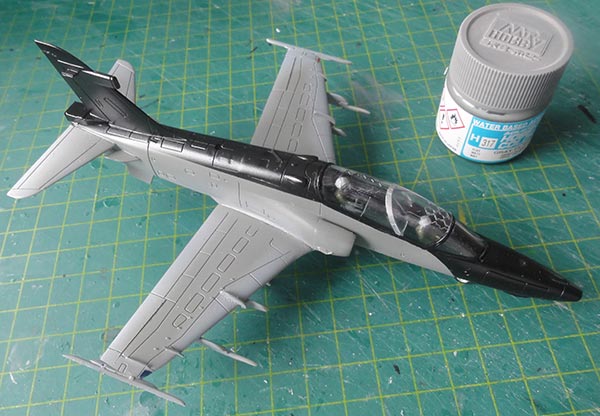
The landing gear was installed and painted. A gloss varnish coat was airbrushed (shield off the transparant areas like canopy) and than decalling with the kit decals done.
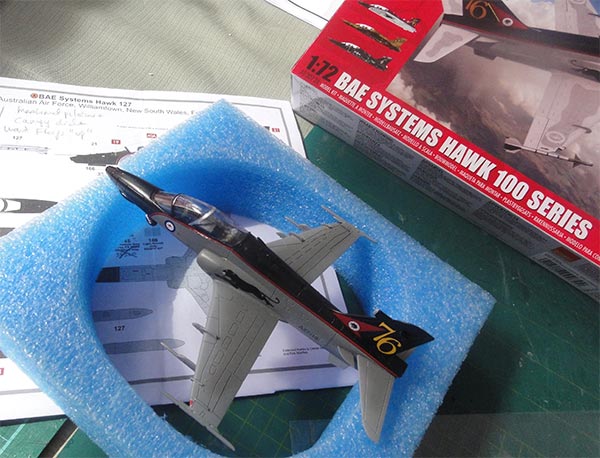
The model was completed with the smaller bits as described for the other model made above. A semi-gloss varnish coat was airbrushed as well.
AUSTRALIA
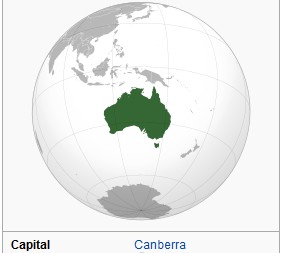


For more information about the Royal Australian Air Force , look at the MB-326 page here...
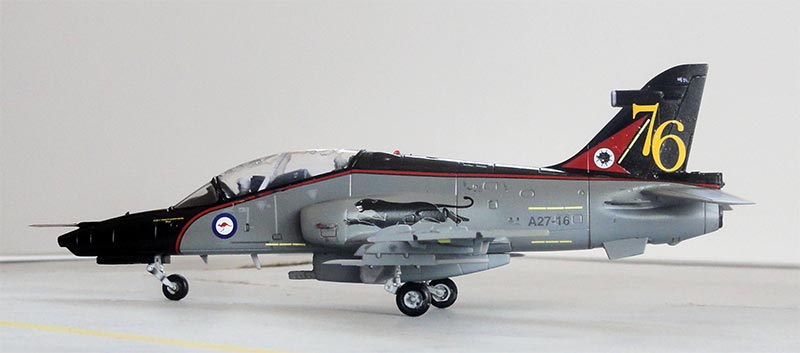
Hawk Mk.127, RAAF, no.76 squadron at Williamstown, 2003. It is used as "lead in fighter" to qualify pilots for the F/A-18. Some 34 Hawk mk.127 were delivered from 2001?.
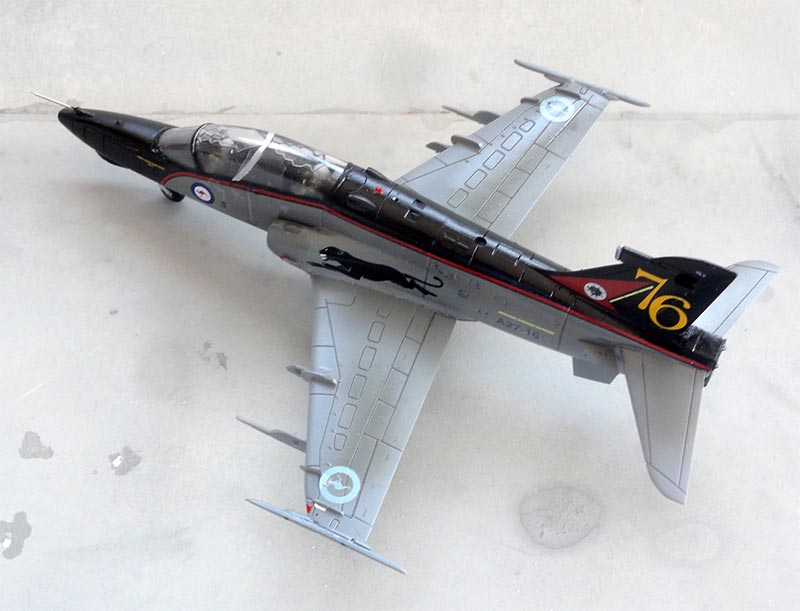
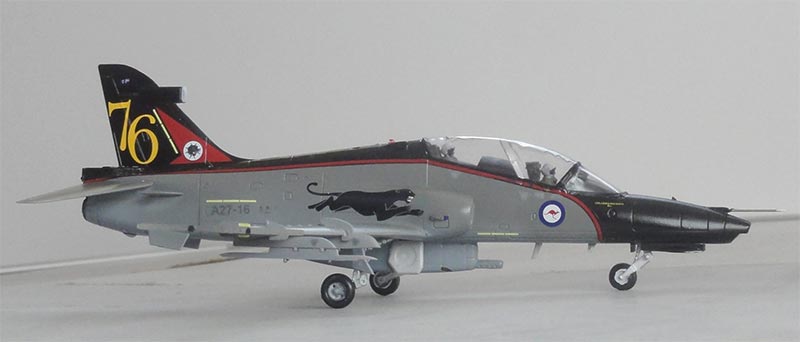
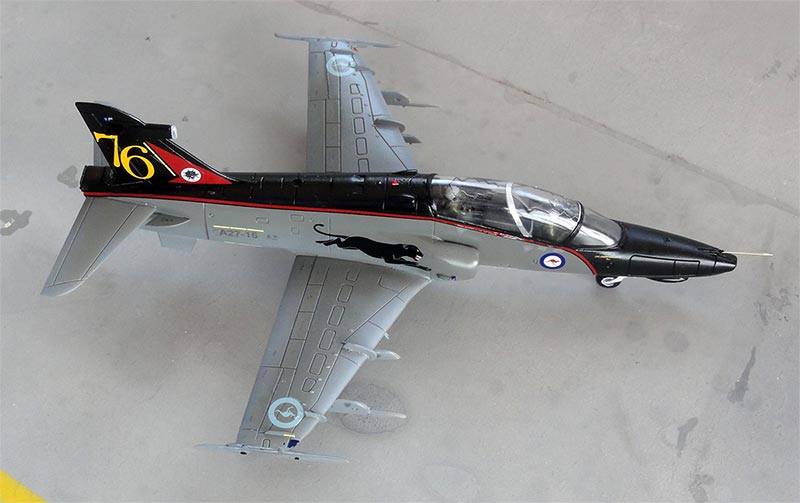
On to next [ Page 9 ... ]
Back to 1/72 Hawk page 1....

(c) Copyright Meindert "designer"/ All rights reserved. Your comments are welcomed by webmaster
Created this page
January 21, 2022
